Idea by
Rafael Calçada
Call for ideas 2021
From Digital Trees to ATLAS Forest
From Digital Trees to ATLAS Forest
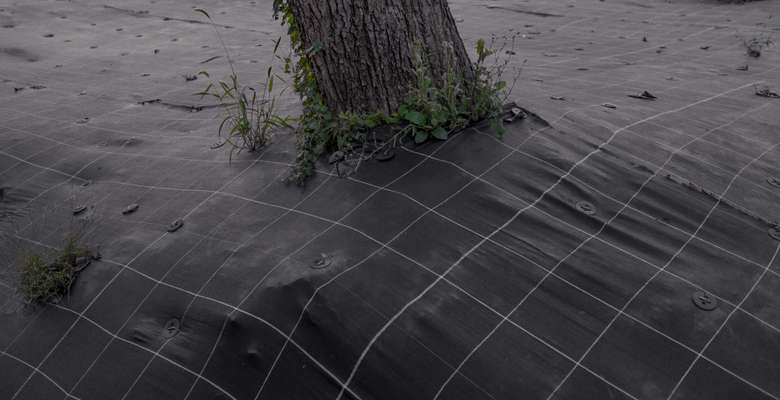
- Systemic changes
The private and hierarchical way in which we think about the construction of space is rooted in practically all oriental and western culture, having resisted several transitions from the era until the arrival in the contemporary.
This archaic model, which is so deeply ingrained, finds refuge even in the construction of an "I" separate from the "Whole" and notions of private property that appropriate common spaces for exploration and capital gain in favor of the common good. more and more in shock with the natural rules that support us here.
If in the field of space, this model is highly tangible, yet it is in the field of ideas in which it manifests itself most pervasively, in the immeasurable loss of value by wasting the capacities of our collective intelligence exchanged by propietary fights.
This project proposes the exploration of the digital space as a means of creating a new common collaboration platform, horizontal and transversal, far beyond the capitalist perspective.
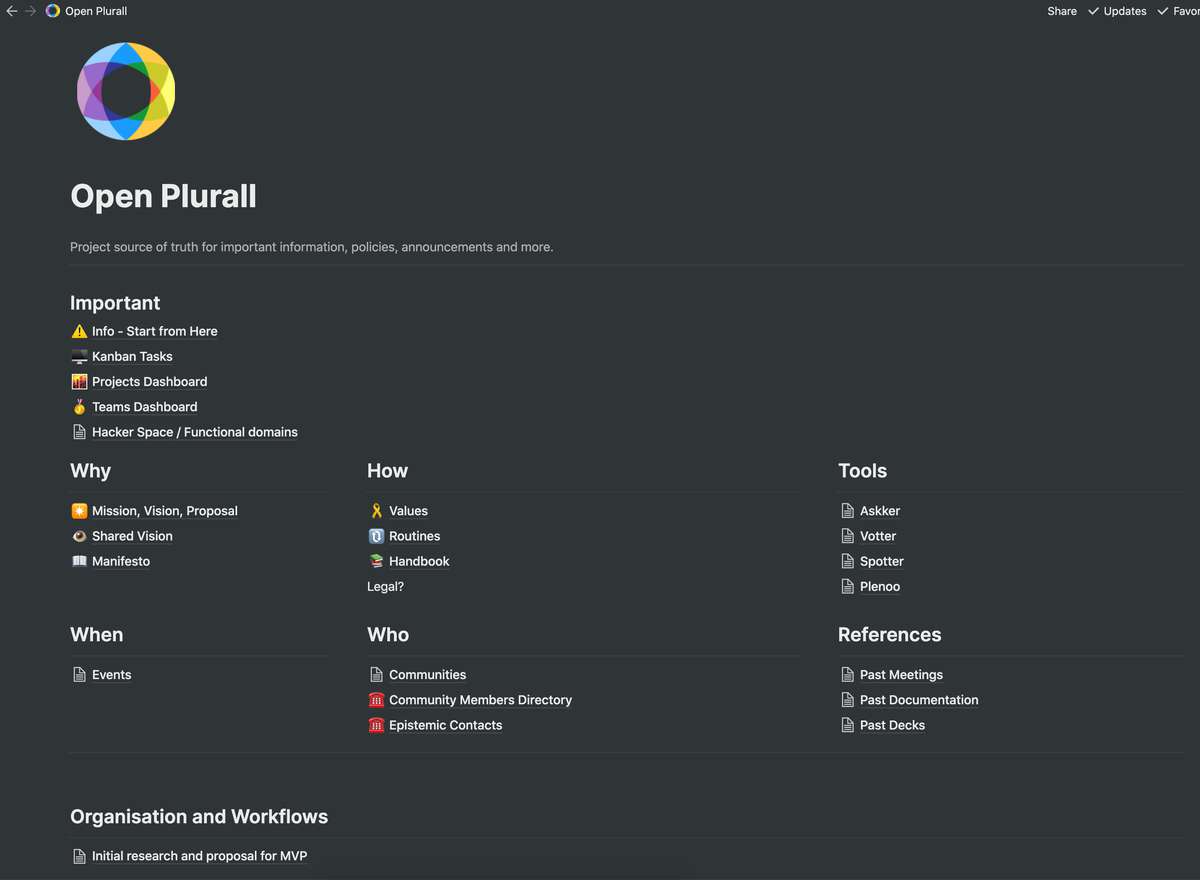
ATLAS Plurall dashboard based on the What, Where, Why and Who framework. This served to facilitate the connection with the other projects that are within the Atlas system and also serves as a basis for creating other projects in the same format. Through it you can find the other teams, other tools, other activities and all content management of the projects that are hosted there. This format can be used both on the notion platform(free) or other text archtecture/CMS with different capacities.
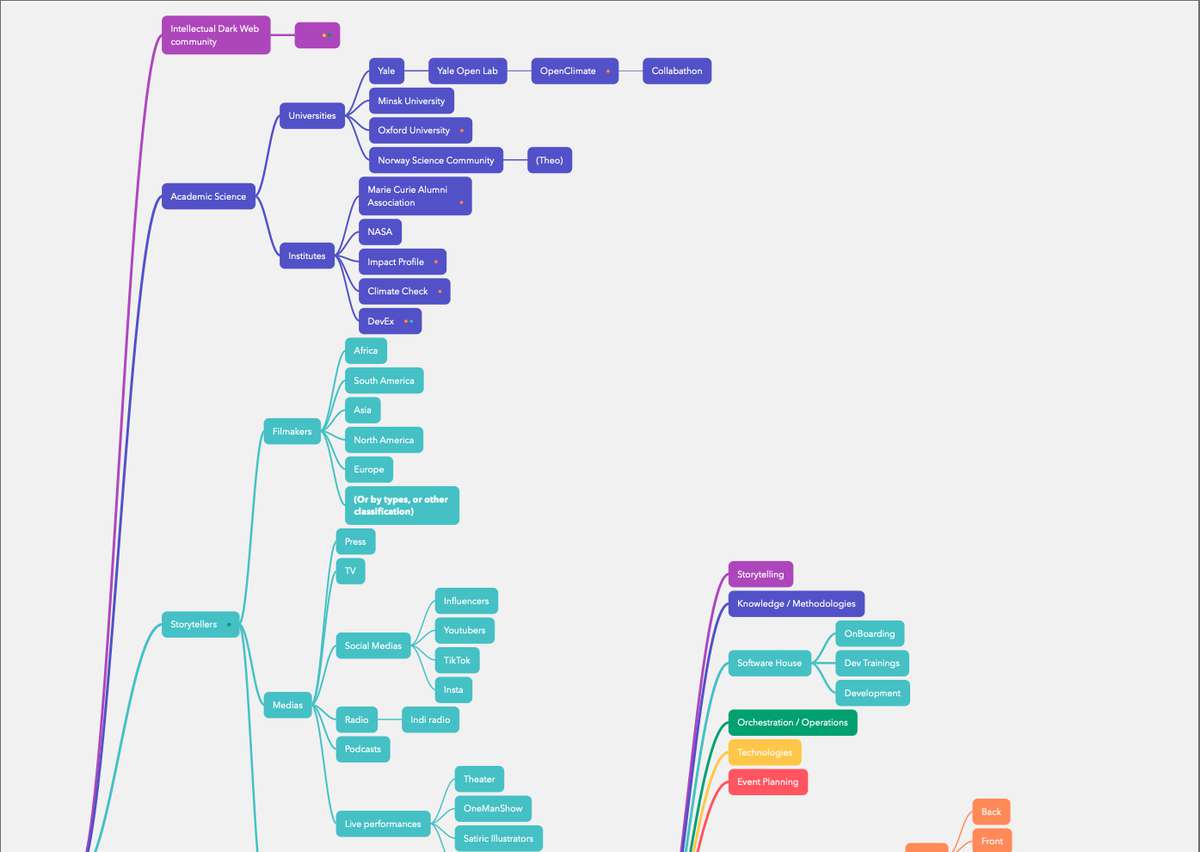
Example 1 of interconnected and thematic platforms that we covered in the Platform.Earth project. In the case of this example, the map uses technology formats and subject themes. It is also possible to modify these maps for interconnection in different ways.
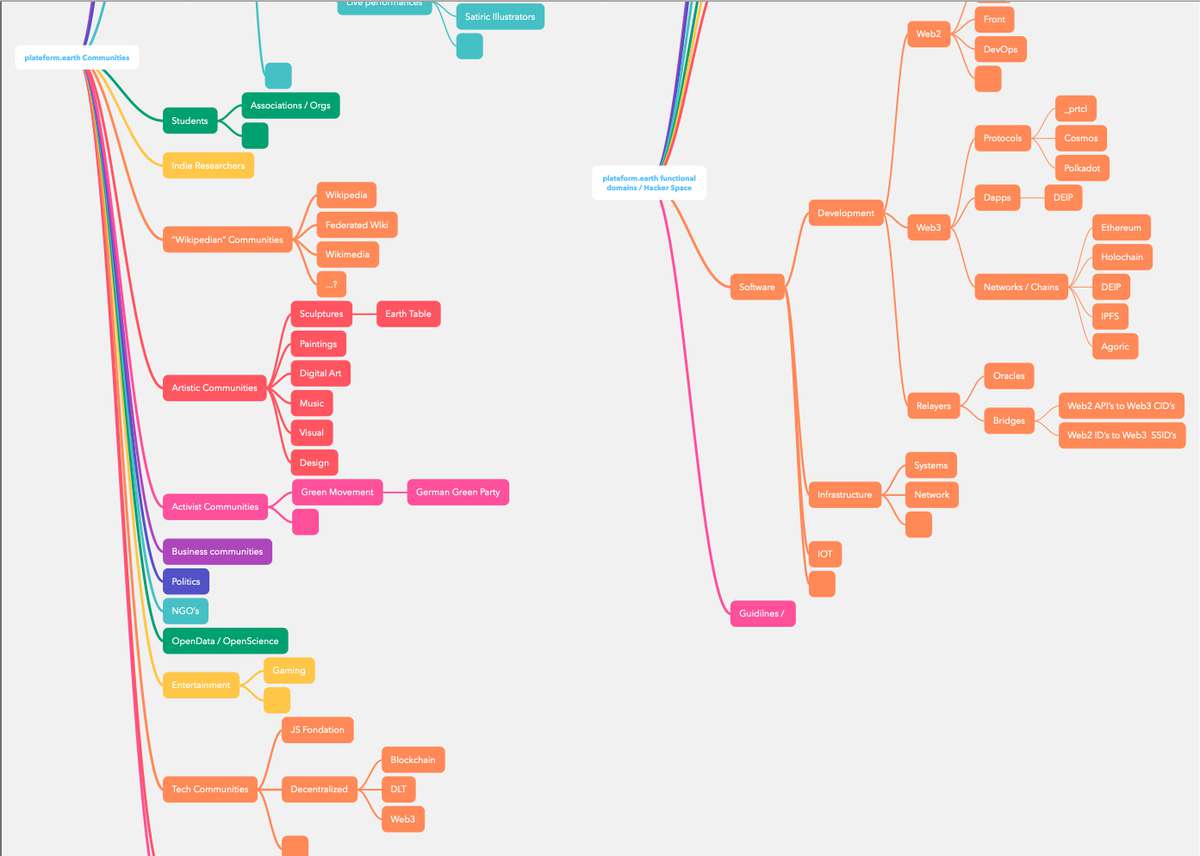
Example 2 of interconnected and thematic platforms that we covered in the Platform.Earth project. Although the example is platforms, here it would also be possible to connect through users and their desires and / or feelings. Being highly customizable.
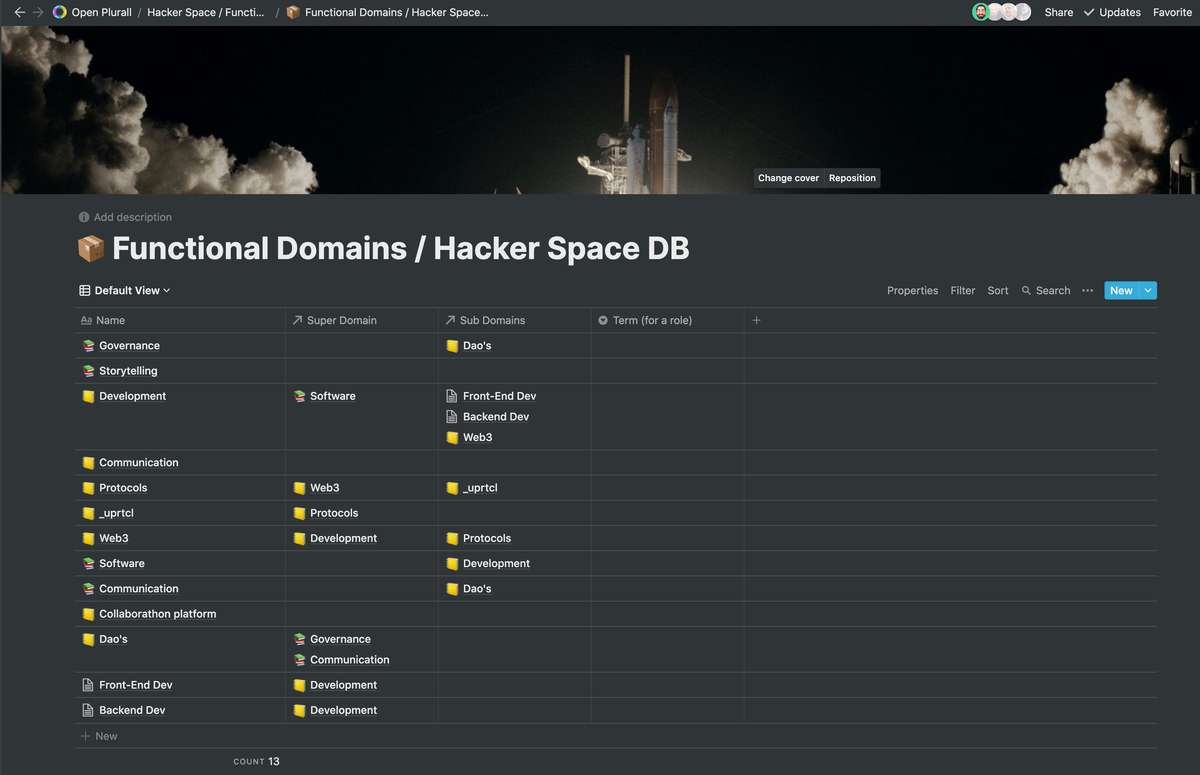
Here you can access the themes through the domain. In this way we find interconnections that can be born through common themes. This technique is based on sociocry, which is also a non-hierarchical management model and can be adapted to work within ATLAS as well.

In this part you see an example of activities following the Kanban model and Agil methodology. Although in the example the active filter is only from that platform, it is possible to browse different projects and create different filters which allows the integration of projects, being extremely useful and effective for the open source development model.
From Digital Trees to ATLAS Forest
From Digital Trees to ATLAS Forest

- Systemic changes
The private and hierarchical way in which we think about the construction of space is rooted in practically all oriental and western culture, having resisted several transitions from the era until the arrival in the contemporary.
This archaic model, which is so deeply ingrained, finds refuge even in the construction of an "I" separate from the "Whole" and notions of private property that appropriate common spaces for exploration and capital gain in favor of the common good. more and more in shock with the natural rules that support us here.
If in the field of space, this model is highly tangible, yet it is in the field of ideas in which it manifests itself most pervasively, in the immeasurable loss of value by wasting the capacities of our collective intelligence exchanged by propietary fights.
This project proposes the exploration of the digital space as a means of creating a new common collaboration platform, horizontal and transversal, far beyond the capitalist perspective.
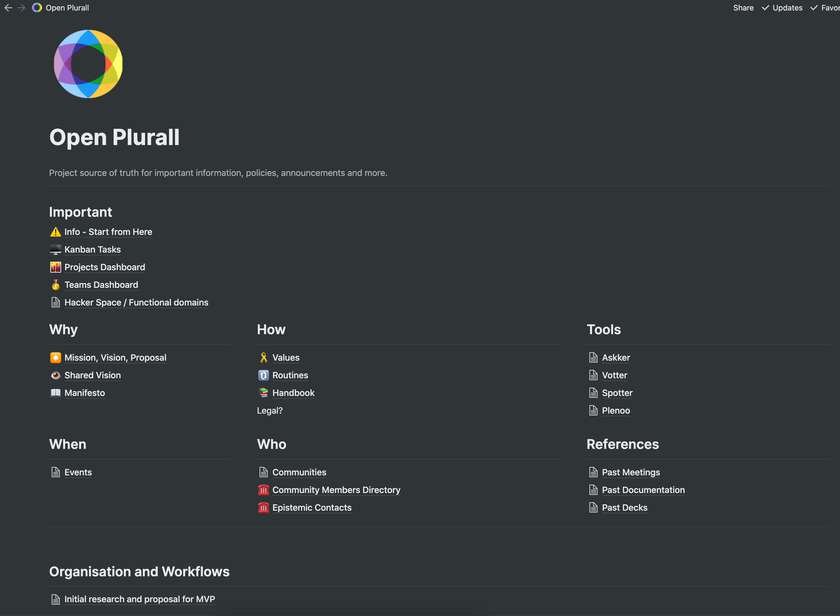
ATLAS Plurall dashboard based on the What, Where, Why and Who framework. This served to facilitate the connection with the other projects that are within the Atlas system and also serves as a basis for creating other projects in the same format. Through it you can find the other teams, other tools, other activities and all content management of the projects that are hosted there. This format can be used both on the notion platform(free) or other text archtecture/CMS with different capacities.
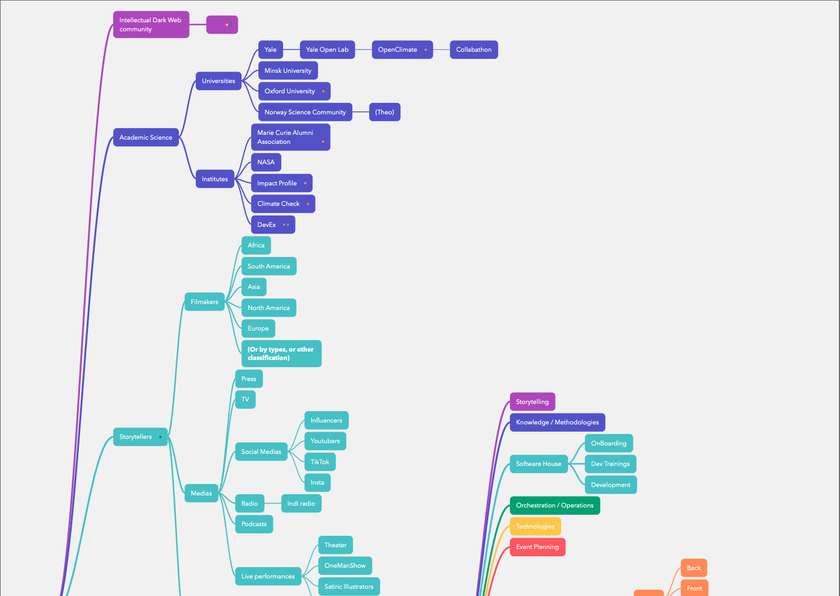
Example 1 of interconnected and thematic platforms that we covered in the Platform.Earth project. In the case of this example, the map uses technology formats and subject themes. It is also possible to modify these maps for interconnection in different ways.
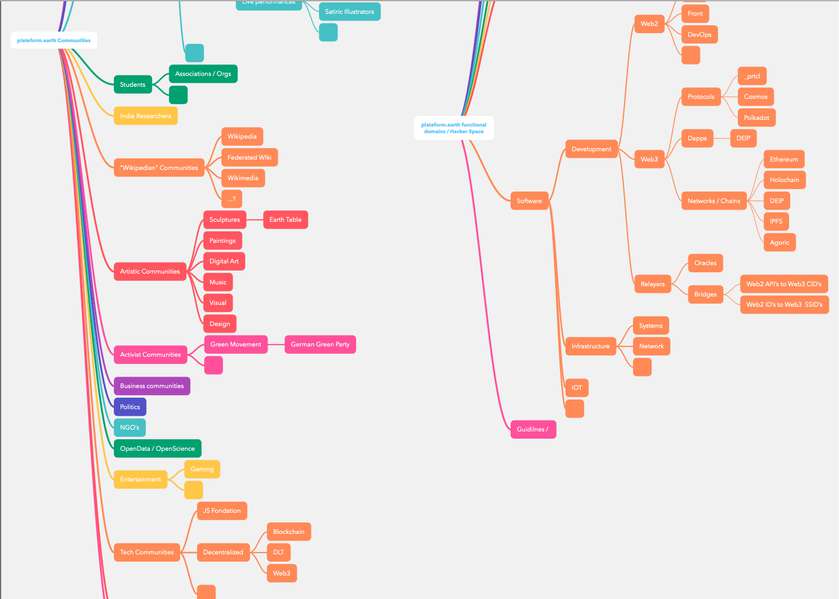
Example 2 of interconnected and thematic platforms that we covered in the Platform.Earth project. Although the example is platforms, here it would also be possible to connect through users and their desires and / or feelings. Being highly customizable.
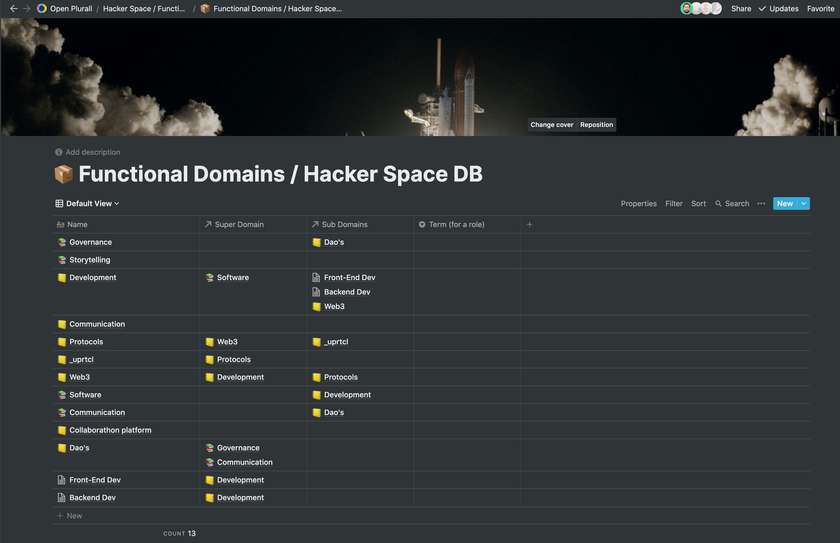
Here you can access the themes through the domain. In this way we find interconnections that can be born through common themes. This technique is based on sociocry, which is also a non-hierarchical management model and can be adapted to work within ATLAS as well.
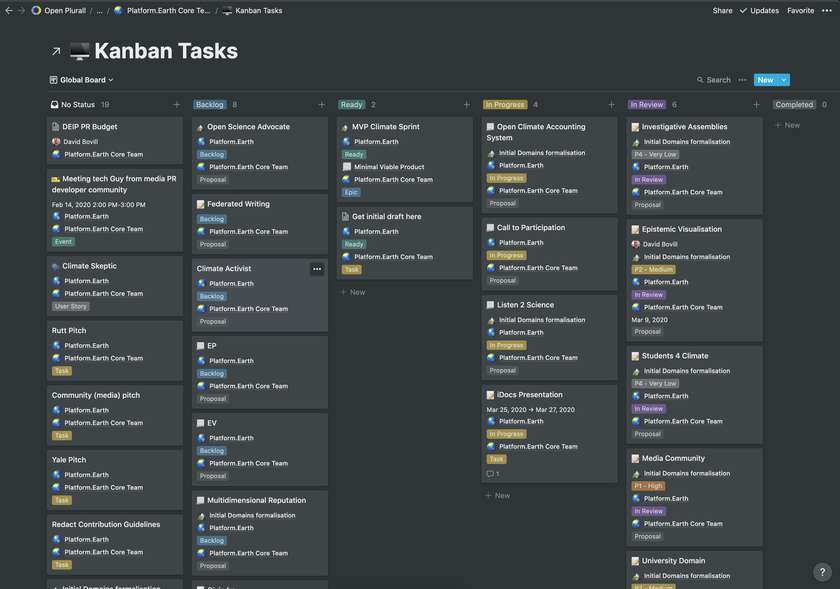
In this part you see an example of activities following the Kanban model and Agil methodology. Although in the example the active filter is only from that platform, it is possible to browse different projects and create different filters which allows the integration of projects, being extremely useful and effective for the open source development model.